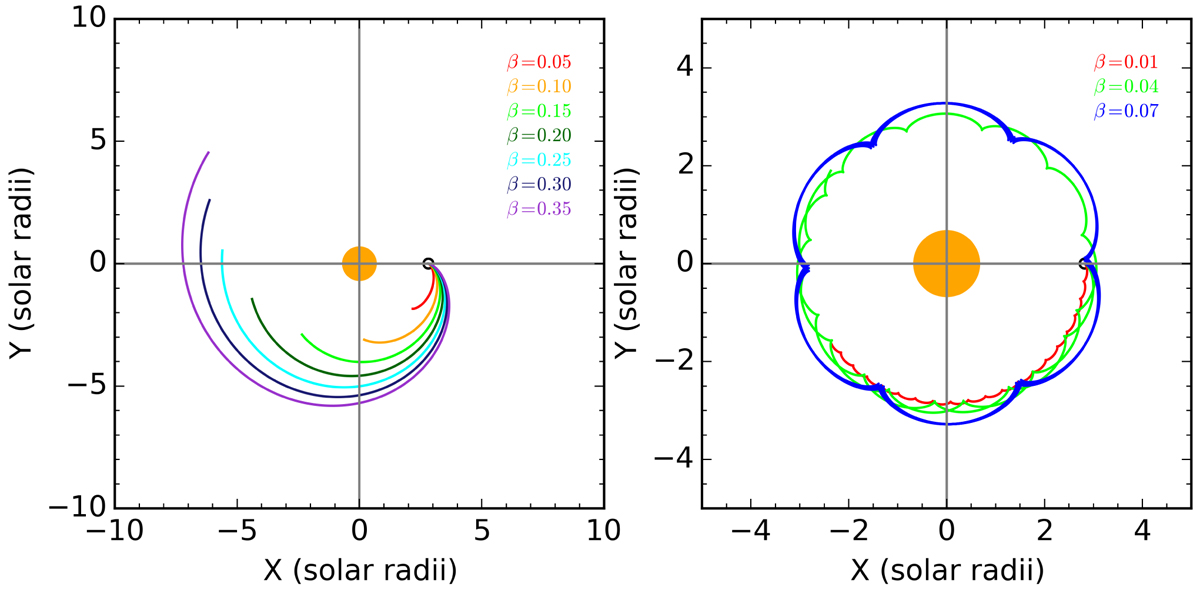Fig. 1

Reproduction of the particle tracks shown in Fig. 7 of Rappaport et al. (2014) to validate the accuracy of our particledynamics code. Both panels show the tracks of non-sublimating particles in the corotating frame of the planet. Left panel: tracks of particles after one planetary orbit for radiation pressure force to gravitational force ratios, β, that vary from 0.05 to 0.35. Right panel: same as left but for 20 planetary orbits, with β = 0.01, 0.04 and 0.07. The cusps are the periastron passages of the dust particles. The orange circle represents the approximate size of the host star, Kepler-1520.
Current usage metrics show cumulative count of Article Views (full-text article views including HTML views, PDF and ePub downloads, according to the available data) and Abstracts Views on Vision4Press platform.
Data correspond to usage on the plateform after 2015. The current usage metrics is available 48-96 hours after online publication and is updated daily on week days.
Initial download of the metrics may take a while.


